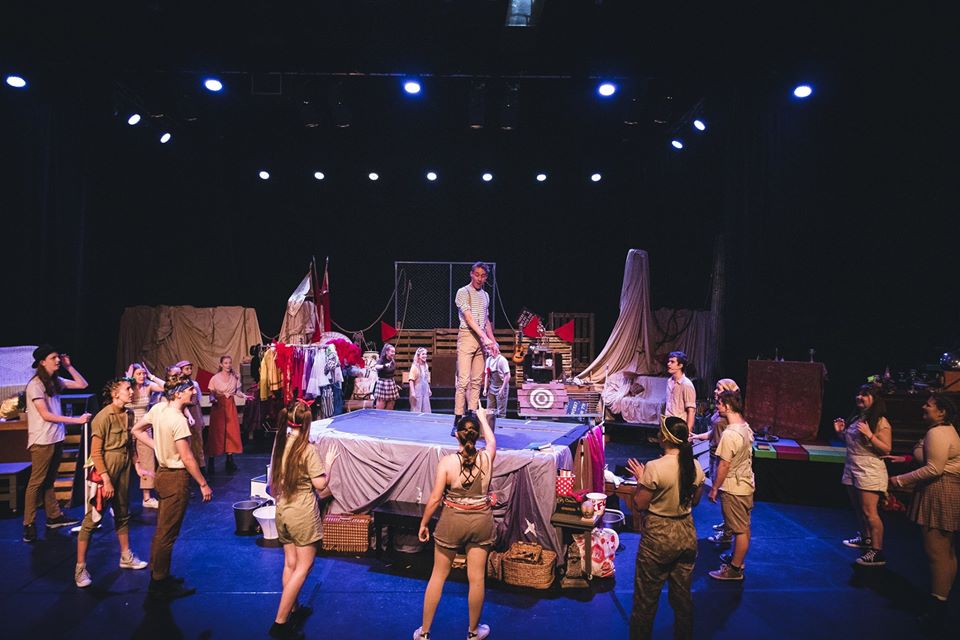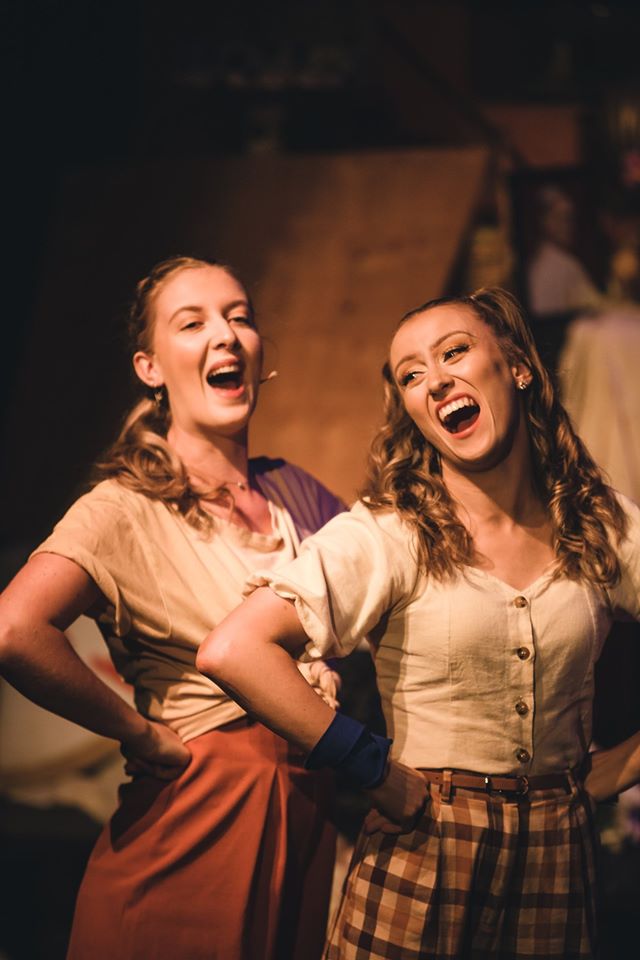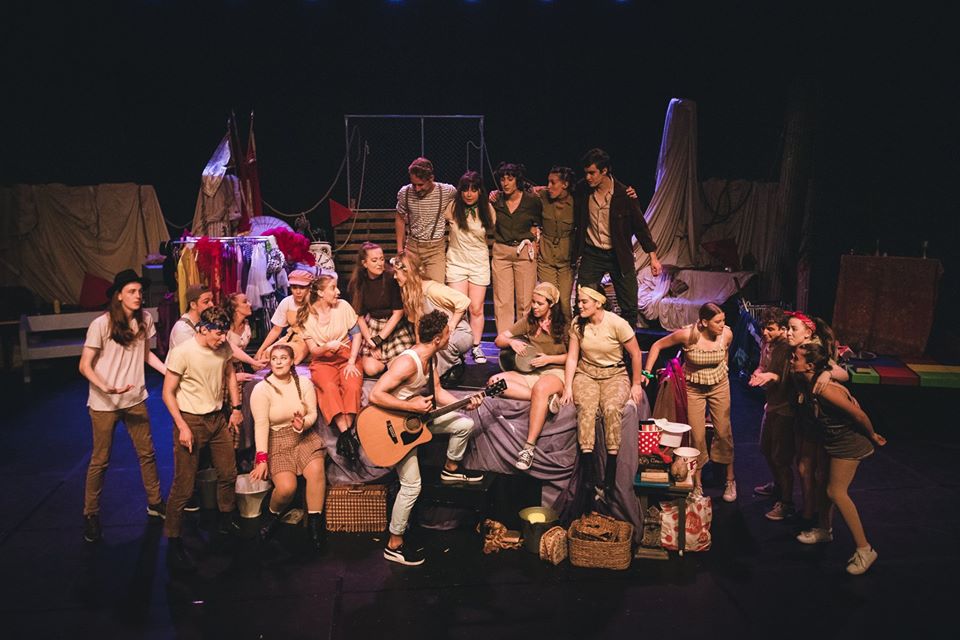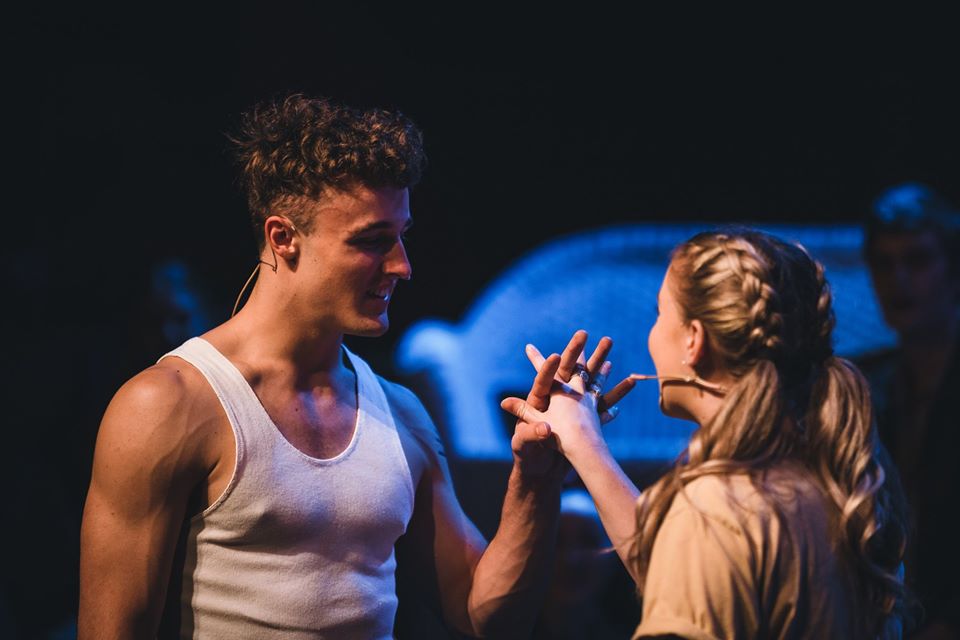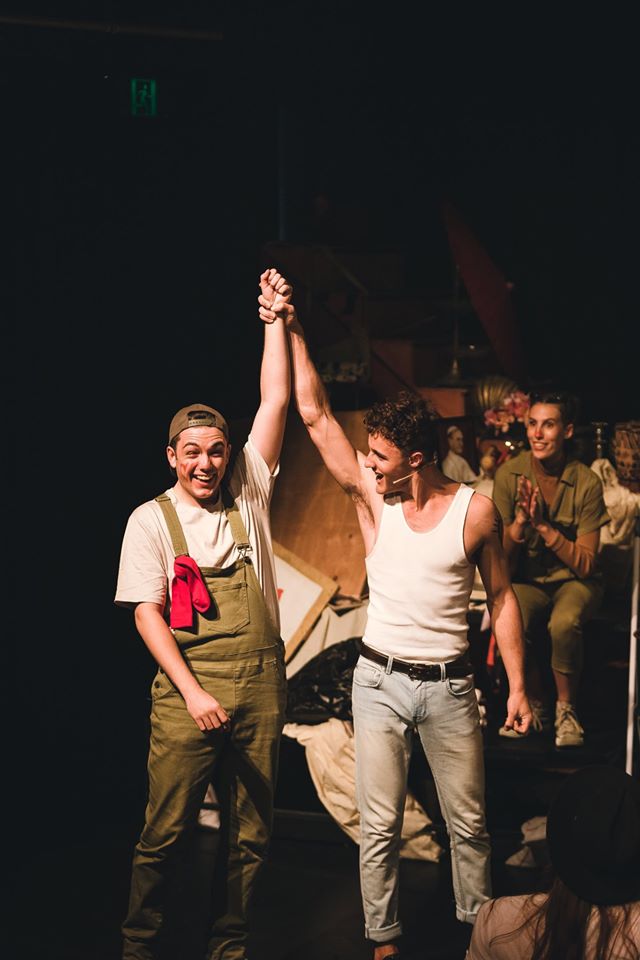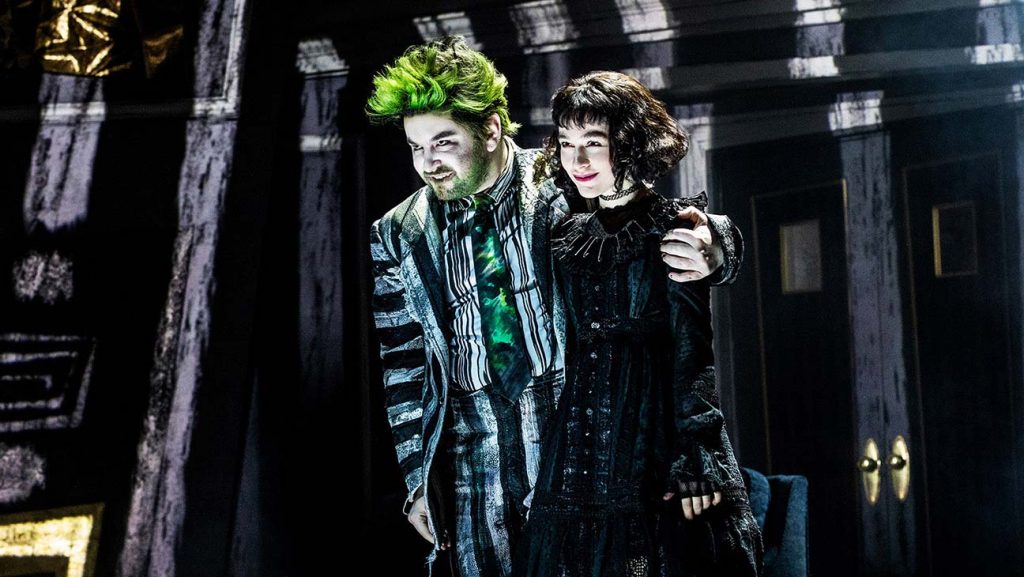
‘Godspell’ // Brisbane Academy of Musical Theatre
‘Godspell’ was exuberant.
Despite having their season cut short due to COVID-19, Hayward Street Studios was full of life and energy ready for the Brisbane Academy of Musical Theatre (BAMT) and their production of ‘Godspell’. Directed by Tim O’Connor, the show works as a series of parables, primarily based on the Gospel of Matthew, but with a rock opera twist.
Among many other shows of the same religious nature, ‘Godspell’ was conceived to remind audiences of the principles and lessons taught in the Bible. Regardless of one’s stance on religion, the show is easily loved by audiences.
Created by John-Michael Tebelak and composed by Stephen Schwartz, the rock musical’ follows a group of ordinary young people who dress up and play as philosophers. In response to this, John the Baptist appears to baptise the group and they become storytellers of the parables. Jesus then appears, asks John to baptise him and then the rest of the show follows the story of Jesus as he, and the storytellers, tell the audience the legendary beliefs.
Hayward Street Studios has quite an impressive theatre space, with a large range of lighting equipment and effects. Lighting Design by Maegan Micola von Furstenrecht used these elements effectively to both compliment and contrast all that was happening on stage. Non-conventional lighting was operated throughout the production, such as flashlights and lighters. For a varied effect, Micola von Furstenrecht manipulated the stage lighting well and worked with these different lighting sources. Overall, these components enhanced the overall mood during each scene.
For the majority of the show, backing tracks were used for the musical numbers, however, there were times when cast members showcased their own musical talents. Nathan Wheeler, Cristian Robba-Colley, and Jasmin Flynn accompanied themselves with either guitar or ukulele until an instrumental track replaced the live backing. This was quite effective and added a refreshing contrast between the pre-recorded tracks and live music.
While this technique worked, at one point, the illusion was broken when Wheeler, who was playing the guitar, turned off the wireless system and continued to mime like he was playing along with the track. For consistency, he either could have placed the guitar down and continued singing, as done throughout the rest of the show.
Set Design realised a perfect amount of organised chaos. The outside of the stage was framed with platforms, benches, chairs, a costume rack and a large array of decorative props. A large platform sat centre stage, which was also surrounded by props, stools and decorative objects. While props and sets were plentiful, they also had a purpose, with many of the pieces used throughout the production and taken from the set by the cast.
A nice interactive touch, was as the audience entered the theatre, the cast were already on stage, interacting with each other. They read books, moved items on and off, and generally explored the space. O’Connor’s direction ensured a level of audience intrigue from the start.
In fact, during ‘Godspell’ there were many moments for audience interaction. Cast members ad-libbed spoken lines, they broke the fourth wall and sung directly to audience members, and even after the final song of Act 1 (‘Light of the World’), and as intermission started, selected audience participants were invited to dance on stage. While this moment bounded with energy, it did last for quite a while, leaving audience members (who were not involved) awkwardly sitting in their seats watching the action still occurring. Throughout the intermission, improvisation offers were played out, with a highlight performance coming from Kurt Myhill who helped drive action. More structure would have benefitted the entire improv section as it lacked focus towards the end.
Costumes were self-devised by the cast. While they were individual, they also tied together through similarities in colour and style. While there was some cohesion in the aesthetic, some costumes were slightly too different when compared to the rest. One or two cast members wore stockings which made them stand out against the rest of the cast. Throughout the pre-show and opening numbers, actors added to their costumes with accessories like a bandanna, scrunchie, jacket etc. Their purpose was soon understood, with the actors changing from themselves into the ensemble storytellers of ‘Godspell’. These items would then be removed at the end of the production to symbolise the return full-circle. It was a simplistic and smooth transition.
Direction by Tim O’Connor strongly and effectively modernised this rendition of ‘Godspell’. The way the parables were told by the cast was completely unique compared to other previous productions. Each story had its own modernised twist and referenced comedic ideas from our society today. This made the traditional stories and teachings more interesting and exciting than ever. O’Connor used the large cast to his advantage and it took the storytelling, through the addition of more action and drama, to a whole new level.
Musical Direction by Dennett Hudson delivered beautiful vocals and harmonies. With a truly capable cast, their abilities made the overall production all the more gratifying. Choreography by Callum Mansfield packed a punch. Mansfield’s strong and effective dance numbers were energetic and the ensemble navigated the large space and set with ease. Mansfield also used sign language in ‘All Good Gifts’, which truly moved and captivated the audience. The biggest highlight of the night was ‘Prepare Ye’, where John the Baptist (played by Cristian Robba-Colley) entered with a sponge and a bucket of water, throughout the number Robba-Colley sprayed the cast and audience with water. Cast members also danced holding water bottles and together, they created beautiful fountains of water that complemented the choreography and added to the atmosphere of the song.
In the title role of Jesus, Nathan Wheeler had a commanding presence and forgiving nature. His beautiful vocals, along with his many talents from gymnastics to playing the guitar, added to his wonderful portrayal of the Lord Saviour. Cristian Robba-Colley fit the role of John the Baptist very well, his physicalisation and smooth vocals produced a captivating performance. Luca Camuglia-May was a standout with his heart-wrenching portrayal of Judas. He took audiences on a journey with his thoughts and inner turmoil, and one couldn’t help but sympathise with his character.
The entire ensemble was animated and gave full commitment, heightening the show’s energy and impact ten-fold. Impressively, their enthusiasm never dipped between scenes and kept building throughout the entire performance. It was easy to recognise their love for the show and for performing, and the audience felt welcomed into their community and story. Among the many featured soloists, some standouts included Annabelle Weaver and Victoria Roberts who both have powerhouse voices and together were all the more dynamic. Marguerite du Plessis showed maturity in her performance and was vocally enchanting. Other memorable performances came from Clark Bryon-Moss with his pocket-rocket energy, Emma Buckman with her charismatic presence, and Clair Sutton with her authentic and strong connection to the show.
BAMT’s production of ‘Godspell’ won the hearts of its audience and successfully embraced them into their community. With this new modernised version of the rock musical, Tim O’Connor has brought the story to life on the stage of the Hayward Theatre Studios. Although it only played for two nights, the production was filled with energy and heavenly performances that made for an exhilarating night out at the theatre. In light of the current COVID-19 crisis, these moments should be cherished.
‘Godspell’ played for only two nights. There is talk of a resurrection of the show in June this year so keep an eye on BAMT’s Website for future announcements.




